SPOTLIGHT:
WSO2CON ASIA 2025


SPOTLIGHT:
WSO2CON ASIA 2025

Omnix International’s Walid Gomaa on unlocking enterprise value in the age of AI
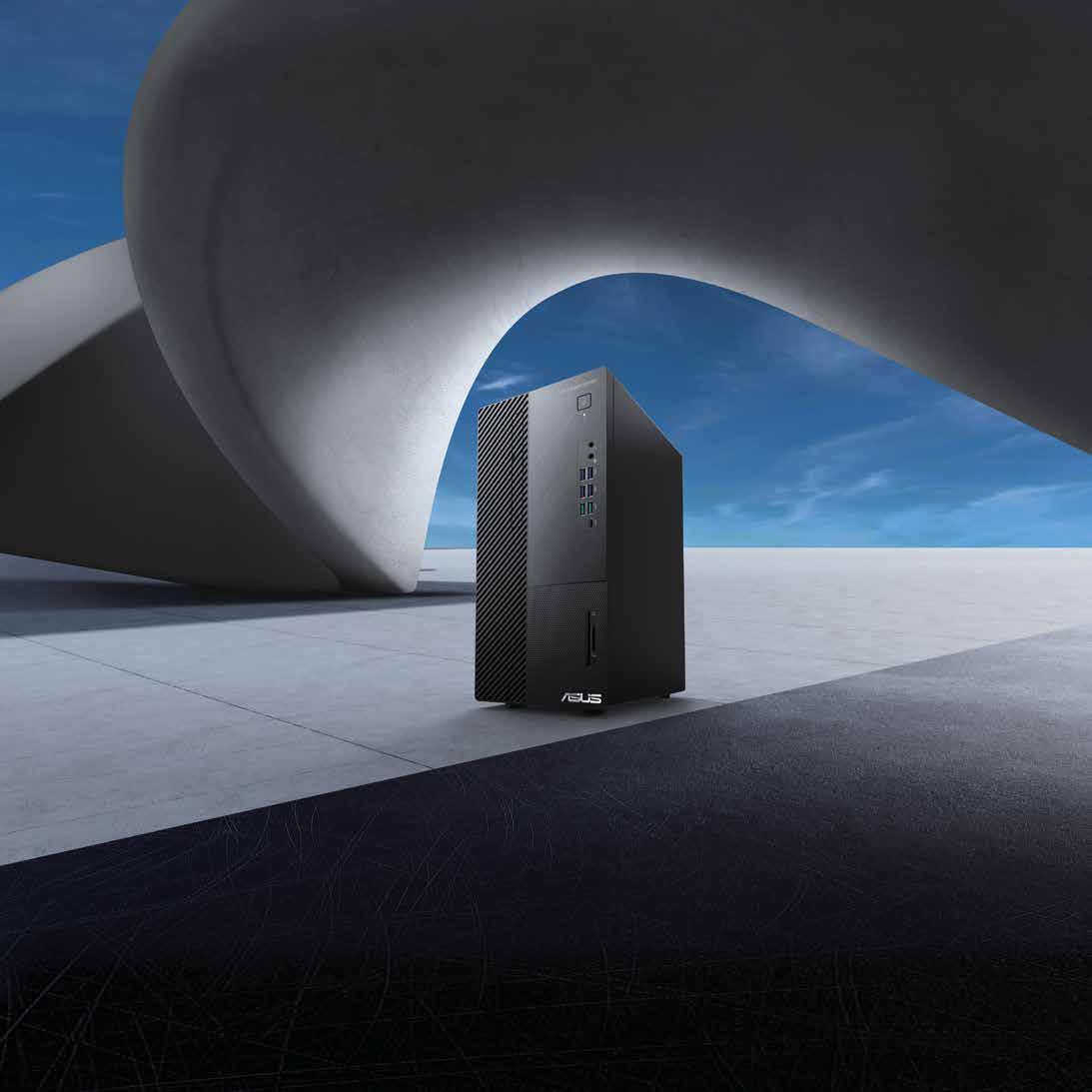

www.cxoinsightme.com
24 WSO2CON ASIA 2025
29 FIBRE TO FUTURE
Mohamed Salama on the role of AI and automation in the evolution of fixed networks
THE INTELLIGENCE LAYER
Abdelilah Nejjari on what it means to build networks of the future
BUILDING TRUST IN THE CLOUD
Sophos’ Gerard Allison highlights the company’s push for local cloud, partner enablement, and AI-powered defence
34 AI’S BALANCING ACT on striking the balance between AI quick wins and sustainable success
IS YOUR CPU THE NEXT RANSOMWARE TARGET?
Halcyon discusses how ransomware is bypassing traditional defences and going straight for the hardware
50 The latest gears and gadgets to keep you ahead of the curve
REWIRED FOR INTELLIGENCE
Omnix International’s Walid Gomaa on delivering measurable value in the AI era
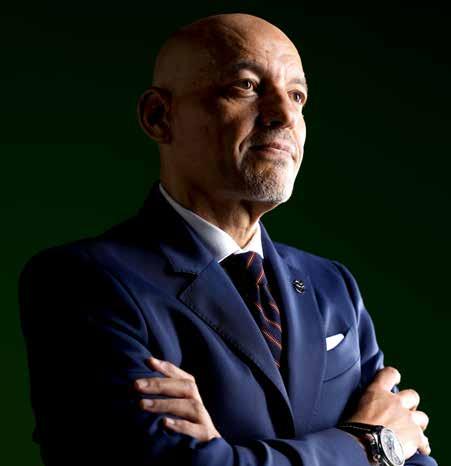







Published by

If there’s a single question that defines this summer’s issue, it’s this: how can artificial intelligence bring measurable value to enterprises? AI may dominate headlines, but the real story is how it moves beyond experimentation to deliver outcomes that matter.
In our cover feature, Walid Gomaa, CEO of Omnix International, emphasises that the true value of AI lies not in chasing efficiency alone, but in aligning innovation with what truly matters to the business—delivering outcomes that drive growth, resilience, and measurable impact. He outlines how AI, automation, and data intelligence are reshaping industries such as construction by cutting rework, improving safety, and embedding accountability through performance reporting. It’s a powerful reminder that technology only matters when it translates into value.
This sentiment is echoed by WSO2’s Chief AI Officer, who notes that the challenge is not hype but building sustainable enterprise intelligence. In the UAE, trust in AI is accelerating at pace. Endava’s new survey reveals that 97 percent of executives are familiar with AI, three-quarters would trust it with lifestyle decisions, and 74 percent even view access to AI as a societal utility.
This issue also brings exclusive perspectives from industry leaders. Nokia’s Mohamed Salama discusses
the role of AI and automation in evolving fixed networks across the Middle East and Africa. Cisco’s Abdelilah Nejjari explores the region’s AI momentum, the rise of AgenticOps, and networks of the future. Ericsson’s Petra Schirren looks at the next chapter of connectivity, while Sophos’ Gerard Allison highlights the push for local cloud, partner enablement, and AI-powered defence. We also feature insights from Dataiku on balancing AI quick wins with sustainable transformation, ServiceNow on reimagining CRM, and Halcyon on how ransomware is increasingly targeting hardware.
Looking ahead, the Cloud Connect Conference and Awards 2025 returns this September in Dubai. Turn to page 16 to learn how you can take part in one of the region’s most important conversations on cloud and digital transformation.
Happy reading!
Adelle Geronimo
Managing Editor
Publication licensed by
@Copyright
Managing Editor
Adelle Geronimo
adelleg@insightmediame.com
+97156 - 4847568
Production Head
James Tharian
jamest@insightmediame.com
+97156 - 4945966
Commercial Director
Merle Carrasco
merlec@insightmediame.com
+97155 - 1181730
Administration Manager
Fahida Afaf Bangod fahidaa@insightmediame.com
+97156 - 5741456
Operations Director
Rajeesh Nair
rajeeshm@insightmediame.com
+97155 - 9383094
Designer
Anup Sathyan
While the publisher has made all efforts to ensure the accuracy of information in this magazine, they will not be held responsible for any errors
UAE’s EDGE and Pavo Group form KEY4 JV

A new Abu Dhabi–based joint venture, KEY4, has been launched by EDGE Group (UAE) and Pavo Group (Türkiye). Unveiled at IDEF 2025, the venture will co-develop advanced defence and security technologies—spanning cryptography, AI, electronic warfare, secure communications, and CBRN solutions—to support both UAE priorities and global partners.
Global smart building market to reach $252 billion

The global smart building market is projected to grow by at least 21.8 percent in 2025, reaching between $117 billion and $252 billion, according to Xylem Vue. The growth will be driven by technologies like AI, IoT, and advanced analytics. Integrated digital platforms, digital twins, energy management systems, and district heating/cooling networks are enhancing sustainability and operational efficiency.
SAP appoints new Regional President for EMEA

SAP has appointed Augusta Spinelli as its new Regional President for EMEA, effective immediately. With over 30 years of experience at SAP—including leadership as EVP and Global Head of the Adoption Services Centre—Spinelli will oversee operations across 53 offices in 89 countries, steering the region’s AI-first, Suite-first digital transformation strategy.
Huawei enters Egypt’s retail scene

Huawei has opened its first Experience Store in Egypt, located at City Centre Almaza in Cairo. The store showcases Huawei’s latest smartphones, wearables, and smart home devices, offering hands-on experiences and reinforcing the company’s retail presence in North Africa.
MENA IT spending to reach $169 billion in 2026

Gartner forecasts that MENA IT spending will climb to $169 billion in 2026, up roughly 8.9 percent from 2025. The fastest-growing segment is data centre systems—projected to surge 37.3 percent to nearly $13 billion—as demand for AI optimised infrastructure and generative AI fuels regional digital transformation.
NetApp names new GM for Saudi Arabia

NetApp has named Saeed Al Zahrani as its new General Manager for Saudi Arabia, reinforcing its commitment to the Kingdom’s digital transformation agenda. Al Zahrani will spearhead local strategy, deepen public and private sector partnerships, and drive value from data across sectors like energy, healthcare, and smart cities.

The Ministry of Transport, Communications and Information Technology (MTCIT) has launched the Space Accelerators Programme to empower Omani startups in developing innovative space-related solutions and services.
The year-long initiative is part of Oman’s national space policy and executive programme, supporting economic diversification and building national capabilities in advanced technologies. It aims to localise space technologies and services through Omani institutions, attract investment, and nurture a competitive innovation ecosystem.
Delivered by Phoenix Space and Technology Company in partnership with UK-based Exotopic, the programme provides technical mentorship, entrepreneurial training, and access to a

broad network of partners and experts.
“This project represents a national programme dedicated to accelerating the growth of local startups in the space sector by enabling them to develop commercially viable space services and solutions,” said Dr Saud bin Humaid Al Shuailee, Director General of Policies and Governance and Head of the National Space Programme at MTCIT. “It offers a comprehensive ecosystem that includes technical mentorship, entrepreneurial training, and access to a wide network of partners and experts — all contributing
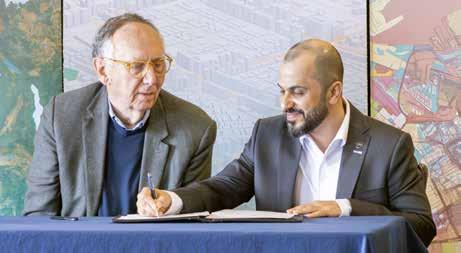
Space42 has signed a Memorandum of Understanding (MoU) with Microsoft and Esri to launch the Map Africa Initiative, a five-year project aimed at creating high-resolution, scalable
base maps for all 54 African countries. The initiative will serve more than 1.4 billion people and address long-standing challenges of fragmented and outdated mapping data across the continent.
to the establishment of a national business environment focused on highvalue space industries and innovation.”
Strategic focus areas include satellite communications, Earth observation and geospatial analytics, navigation technologies, UAVs, artificial intelligence, advanced computing, data storage, the Internet of Things (IoT), and spacecraft simulation.
To foster sustainability, the top three startups will receive incentive awards to support long-term growth and alignment with Oman’s space sector strategy.
This collaboration with Microsoft and Esri is more than technical; it’s strategic
As part of the collaboration, Space42 will lead fundraising and project management, leveraging satellite data and AI-powered mapping solutions. Esri will oversee geospatial workflows and capacity-building, while Microsoft will provide secure cloud infrastructure and advanced AI capabilities through Azure.
Hasan Al Hosani, CEO of Smart Solutions at Space42, said, “Partnership is core to the UAE’s DNA, and is central to how Space42 operates. This collaboration with Microsoft and Esri is more than technical; it’s strategic. It advances Space42’s business priorities, strengthens our role as a trusted partner to governments, and delivers meaningful benefits to communities across Africa.”
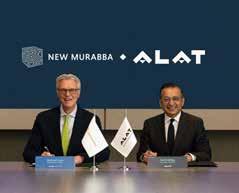
Saudi Arabia’s flagship gigaproject, New Murabba, has signed a landmark Memorandum of Understanding (MoU) with Alat, another Public Investment Fund (PIF) company, to collaborate on
Red Sea Global (RSG), the Saudi developer behind some of the Kingdom’s most ambitious tourism projects, has become the first organisation in the Middle East and North Africa to deploy SAP’s AI-powered copilot, Joule, within its human resources operations.
advanced technology solutions for The Mukaab and broader developments.
The partnership aims to craft a seamless, immersive digital environment—dubbed A Gateway to Another World—by integrating cutting-edge systems and multisensory environments to elevate visitor interactions. A key focus will be on next generation vertical transportation, including intelligent elevators and escalators, to enhance mobility throughout The Mukaab and the wider New Murabba site.
The MoU also outlines plans to explore optimal funding strategies for hardware and R&D, and assess the feasibility of establishing resilient production facilities within the Kingdom. Warranty, maintenance, and post
installation upgrade frameworks are also part of the scope.
Michael Dyke, CEO of New Murabba, said, “This MoU marks a major milestone in our journey to deliver New Murabba and The Mukaab. Our partnership with Alat underscores our commitment to harnessing next generation technologies that deliver exceptional experiences and support the creation of a smart urban destination.”
Amit Midha, CEO of Alat, added, “The MoU with New Murabba marks a bold step toward shaping the future of tech enabled urban living. By uniting Alat’s AI driven hardware with New Murabba’s visionary approach, we aim to deliver intelligent infrastructure and transformative experiences that align with Saudi Arabia’s Vision 2030.”
The rollout, covering around 10,500 employees across RSG and its subsidiaries, embeds Joule into SAP SuccessFactors to streamline HR tasks such as drafting job descriptions, screening candidates, and managing performance reviews. By enabling HR professionals to use natural language prompts for complex tasks, the solution is designed to improve consistency, accelerate processes, and free teams to focus on strategic priorities.
“We are proud to be the first organisation in the region to implement
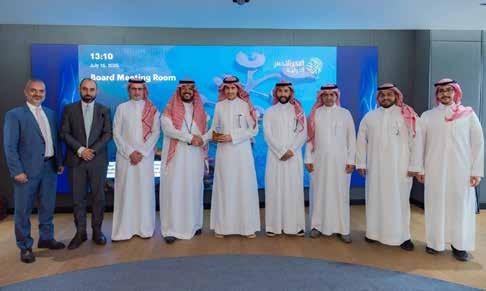
10,500
The number of employees that will be powered by SAP’s Joule AI at RSG
SAP Joule for HR. Implementing Joule AI has empowered our HR teams to focus on strategic initiatives by streamlining repetitive tasks,” said Sultan Moraished, Group Head of Technology & Corporate Excellence at RSG. “This technology is a game-changer for fostering talent development and aligning our workforce with the ambitious goals of Vision 2030.”
Mohammed Alromaizan, Vice President, SAP KSA, added: “Red Sea Global is leading by example in applying Business AI to real-world operations. The successful deployment of Joule in HR shows how AI can enhance efficiency, empower teams, and support strategic goals. We’re proud to support RSG on their journey to drive innovation and deliver on Vision 2030.”


Dell PowerScale accelerates AI workflows with lightning-fast data access, helping you move from raw data to real innovation, seamlessly and at scale
Low Latency Storage Access

Scalable up to 300 PBs
Universal Data Access
WORM Smar tLock Compliance
GPU Direct for high-speed and efficiency data access
Power AI Anywhere, Everywhere
Supercharge Your AI Applications with Cloud Box Technologies
Call us at 04 210 1900
Email us at info@cloudboxtechnologies com
Visit www cbt ae
Follow Us on LinkedIN


“READINESS FOR FUTURE TECHNOLOGIES – AND THE CAPACITY TO APPLY THEIR DIVERSE USE CASES – HAS BECOME A KEY BENCHMARK FOR GOVERNMENTS AND THE PRIVATE SECTOR IN DESIGNING AND BUILDING THE FUTURE”
HE
Mohammad Abdullah Al Gergawi, Vice Chairman of the Board of Trustees and MD, Dubai Future Foundation
“ANY COMPANY NEEDS TO LEARN TO STAY YOUNG. IT’S NOT ABOUT AGE — IT’S ABOUT HOW YOU OPERATE, HOW YOU THINK, HOW YOU ACT. IT’S ABOUT BEING OPEN TO CHANGE AND BEING ADAPTABLE”

Anew report from Endava highlights how UAE business leaders are placing unprecedented levels of trust in artificial intelligence, extending well beyond low-risk tasks into high-stakes decisions that shape both professional and personal lives. The findings, captured in the infographic below, reveal striking confidence in AI to manage everything from budgets and hiring to health, safety, and even career and financial guidance—underscoring the UAE’s readiness to embrace a new era of AI-led decision-making.
In the UAE, trust in AI has crossed a defining threshold — shaping life, work, and society like never before
AI isn’t just another emerging technology, it’s fast becoming a trusted partner in people’s lives, businesses, and the fabric of society itself. Business leaders here aren’t just experimenting with AI; they’re embracing it, trusting it with high-stakes decisions at work, personal choices at home, and even calling for it to be treated as a basic societal utility.
AI adoption is the dominant business priority
Adopting AI is the no. 1 business
better client services at no. 2
AI is trusted with high-stakes business decisions
79%
There’s a gap between AI strategy and execution
AI isn’t just another emerging technology, it’s fast becoming a trusted partner in people’s lives, businesses, and the fabric of
Familiarity is very high in the UAE 97% of respondents are at least somewhat familiar with AI and its capabilities
Endava asked 300 business leaders in the UAE how they feel about AI in their work, their personal lives, and in society.
We asked 300 business leaders in the UAE how they feel about AI in their work, their personal lives, and in society.
AI adoption is the dominant
People trust AI with personal decision making 76% of respondents would trust a completely automated AI to make lifestyle decisions on their behalf
AI is seen as a force for good
believe that successful implementation of AI in the UAE will significantly improve the quality of life of its people
97% of respondents are at least somewhat familiar with AI and its capabilities
trusted with
of middle management
There’s a gap between AI strategy and execution of C-suite respondents
People trust AI with personal decision making 76% of respondents would trust a completely automated AI to make lifestyle decisions on their behalf AI is seen as a force for good
believe that successful implementation of AI in the UAE will significantly improve the quality of life of its people
There’s a gap between
The AI transformation is underway, and it’s more than process deep; it’ll send ripples through all organisations and industries, through our personal lives, and will run deep into our culture and societies.
the insights here, speak to experts and to your colleagues, and go and get your organisation set up for AI success
The AI transformation is underway, and it’s more than process deep; it’ll send ripples through all organisations and industries, through our personal lives, and will run deep into our culture and societies.
Use the insights here, speak to experts and to your colleagues, and go and get your organisation set up for AI success.
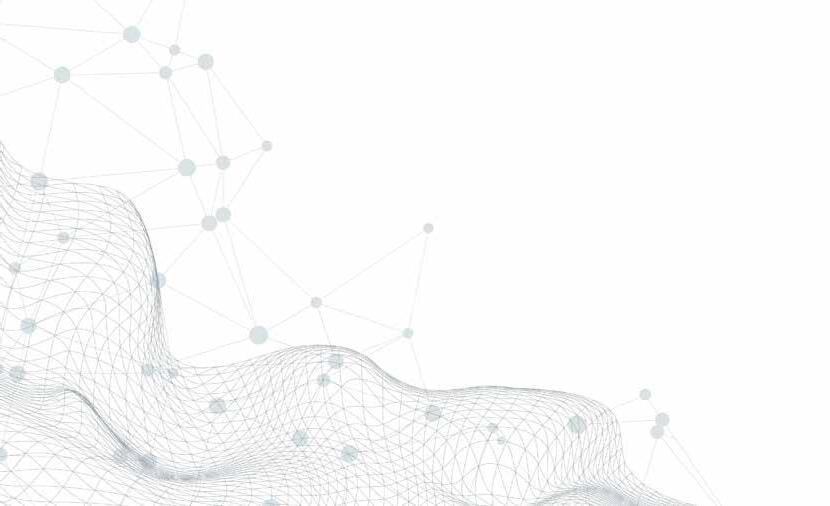
Cloud Connect Conference and Awards returns for its fifth edition to spotlight the latest trends, showcase cutting-edge strategies, and recognise excellence in cloud transformation
Cloud computing has evolved from being a disruptive force to becoming the backbone of digital transformation worldwide. What started out as a tool to optimise costs and scale operations has now expanded into a foundation for artificial intelligence, advanced analytics, and industry-specific innovation. In 2025, the cloud is no longer simply about “moving to the cloud”—it’s about building smarter, faster, and more resilient enterprises.
With global end-user spending on public cloud services projected to reach approximately $723 billion in 2025, the technology’s impact is undeniable. Organisations of all sizes are rethinking business models, accelerating time-to-market, and unlocking new opportunities through cloud-driven strategies.
This momentum will take centre stage at the Cloud Connect Conference and Awards 2025, returning to Dubai on 25th September 2025 for its fifth edition. The event will convene CIOs, CTOs, industry leaders, and innovators to explore how cloud continues to reshape business and society. Attendees can expect insightful keynotes, panel discussions on emerging
trends, and practical case studies highlighting the region’s most ambitious cloud journeys.
A highlight of the event, the Cloud Connect Awards, will honour organisations and individuals who have demonstrated exceptional vision and impact through cloud adoption. Whether enhancing customer experiences, driving sustainability, or enabling new business models, the awards recognise those setting benchmarks for the industry.
Award entry process
• Go to the website: https://www.cxoinsightme.com/CloudConnect/2025/
• Click ‘Nominate now’
• Select your category: End-user or Vendor
• Tell us why your innovation deserves recognition
Winners will be announced on 24th September 2025 at the JW Marriott Marquis, Business Bay in Dubai.
Submissions close on 12th September 2025.





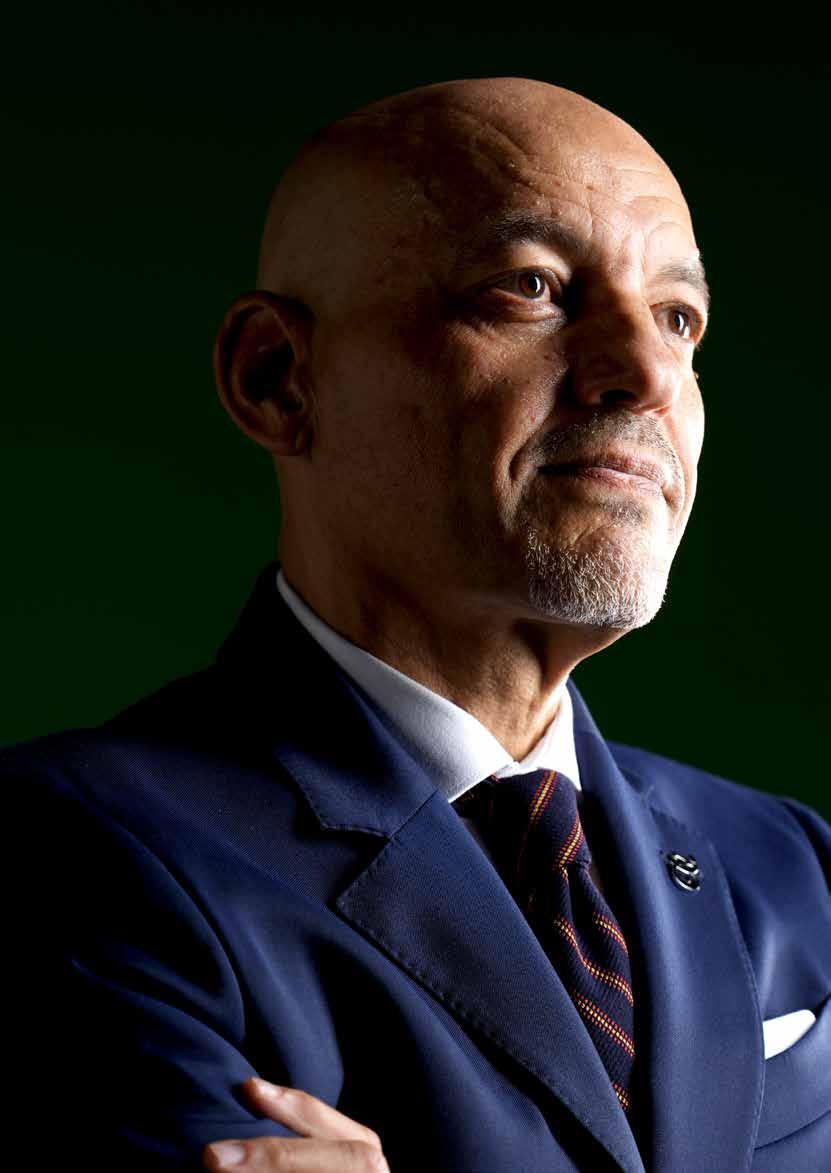

Walid Gomaa, CEO, Omnix International, highlights how successful digital transformation in the AI era comes from aligning innovation with enterprise goals and delivering measurable value
Technology leadership is often defined not by how quickly an organisation adopts the latest tools, but by how effectively those tools translate into long-term impact.
For many industries, especially construction and enterprise operations, digital transformation still too often feels like a buzzword— promising more than it delivers.
At Omnix International, CEO Walid Gomaa is steering a different course, positioning the company at the forefront of digital innovation across the Middle East. Increasingly, Omnix is focused on helping businesses move past surface-level digitisation and into territory where artificial intelligence (AI), automation, and data intelligence drive strategic, measurable value. Under Gomaa’s leadership, the company has sharpened its approach—one that demands clarity of purpose, business alignment, and above all, outcomes.
Gomaa sees the industry’s obsession with efficiency as necessary, but not sufficient.
“Digitisation goes far beyond
AI performance reporting is becoming critical for building trust, ensuring accountability, and enabling continuous improvement
incremental efficiency gains,” he says.
“It empowers data-driven decisionmaking, predictive insights, and the creation of new business models.”
In sectors like construction— where operational silos, legacy systems, and manual processes are still dominant—technology has the potential to radically reshape outcomes. The challenge is less about adoption and more about integration. For Gomaa, the opportunity lies in building connected digital ecosystems

where technologies such as BIM, IoT, and AI converge coupled with constantly evolving services to deliver outcomes such as predictive analytics, reduced reworks, improved safety, optimised asset lifecycle management, and seamless collaboration across project teams. Despite widespread investment in advanced tools, many organisations still struggle to convert technology into value. Gomaa is candid about where things go wrong. “Many rush into deploying AI-powered
predictive analytics without establishing data readiness or integrating these tools into operational workflows,” he explains.
This leads to projects that deliver technical success but stall in what he calls “pilot purgatory”—a state where well-built solutions remain unused, sidelined by misalignment or lack of ownership.
One frequent misstep is when technical teams build tools in isolation from the business side.
“The disconnect between technical

and business teams is a primary reason for such mismatches,” he says. “To avoid this, it is critical to ensure that business objectives are clearly defined and that data science efforts remain focused on enhancing operations, and solving highimpact problems with measurable outcomes.”
Turning experiments into enterprise assets
What separates real transformation from experimentation, Gomaa
believes, is disciplined measurement. Defining outcomes before projects begin—rather than retrofitting metrics afterward—is critical. “Organisations should focus on tracking outcomes that reflect tangible business impact—process automation rates, cost savings, improvements in prediction accuracy, and reductions in cycle times,” he says. Adoption rates, particularly at the operational level, are also key indicators of success. For AI to move beyond the lab, it must become embedded
in day-to-day workflows, not just executive presentations.
As organisations lean more heavily on AI, Gomaa sees a growing need for formal performance monitoring—something akin to financial or operational reporting. “AI performance reporting is becoming critical for building trust, ensuring accountability, and enabling continuous improvement,” he says. These reports should go beyond ROI to include accuracy, false positives, bias detection, system uptime, and
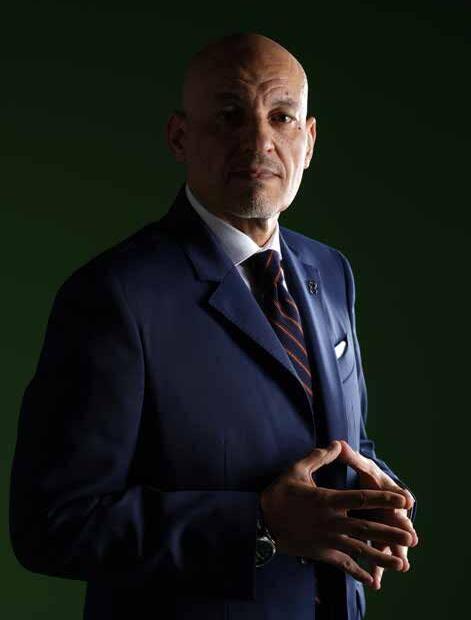

Preparing clients to extract long-term value from digital investments requires going beyond tech implementation
explainability. Tools that track drift in data and model performance are also crucial to maintain relevance and avoid operational risk.
“Embedding such reporting into regular management dashboards ensures that AI initiatives remain aligned with business objectives while offering clear visibility and guiding ongoing refinement,” Gomaa explains.
Internally, Omnix applies a rigorous framework to evaluate which AI solutions are worth bringing to market. Technical feasibility—factors like data quality, scalability, and integration complexity—must be balanced with commercial viability.
“We assess market demand, customer value, and expected ROI,
but we also weigh time-to-value and strategic fit with the customer’s broader transformation goals,” he says. “This disciplined approach ensures our AI offerings are practical, distinctive, and deliver real business results, rather than adopting AI without clear purpose.”
One of the clearest examples of this strategy in action is Omnix’s work in the construction sector. For years, construction has lagged behind in digital maturity, held back by fragmented systems and on-site inertia. That’s now beginning to shift. “Success in applying AI and automation in construction is defined by measurable improvements in project delivery certainty, safety, and lifecycle value,” Gomaa says. AI is being used to reduce rework through design validation, shorten timelines via predictive scheduling, and improve site safety through real-time analytics and monitoring. AI-driven photo auto-tagging has also become a game changer—automating documentation and categorisation of critical field data, saving hours and improving accuracy.
This digital momentum is being echoed across the region. According to the Autodesk 2025 “State of Design & Make” report, BIM adoption among construction firms in the Middle East—particularly in the UAE and Saudi Arabia—has reached 38 percent, putting the region slightly ahead of other EMEA markets. The report also highlights a clear correlation between digital maturity and business confidence: 82 percent of companies categorised as “digital leaders,” defined by their use of fully automated workflows and active AI integration, say they feel positive about their financial outlook—compared to just 63 percent of “emerging” firms and 52 percent of beginners. These numbers reinforce Gomaa’s belief that integrated, outcome-focused transformation is no longer optional—it’s a competitive imperative.
Generative design, another area of growth, is supporting sustainability goals by enabling early-stage energy analysis and embodied carbon estimates. “We’re seeing these functions move upstream

in the design process, where they can influence decisions rather than simply report on them,” Gomaa adds. This reflects a broader shift in how digital tools are viewed—not as backoffice utilities, but as strategic assets.
Still, Gomaa cautions that technology alone won’t deliver long-term value. Cultural and structural preparedness play just as important a role. “Preparing clients to extract long-term value from digital investments requires going beyond tech implementation,” he says. It involves creating a mindset of continuous learning and digital curiosity, redesigning incentive models to reward innovation, and tying digital KPIs to leadership performance metrics. Structurally,
this could mean establishing crossfunctional teams or dedicated boards to oversee digital value realisation. Even contractual models need to evolve. Omnix increasingly works with clients to embed digital workflows, service-level agreements, and performance incentives directly into project frameworks. These elements ensure accountability, reinforce adoption, and align vendor-client relationships around outcomes rather than deliverables.
“Transformation should be baked into how the project is run—not tacked on at the end,” Gomaa says.
What differentiates Omnix in an increasingly competitive market, he believes, is the ability to bridge strategy and execution. “Our greatest
opportunity lies in helping customers attain measurable success,” he says.
“We guide them from ideation to value realisation—identifying highimpact use cases, tailoring solutions to their sector, and defining ROI.”
Importantly, Omnix also supports customers in building the governance structures and digital capabilities needed to sustain that value.
For industries weighed down by legacy systems and complexity, the temptation to chase fast fixes is understandable. But as Gomaa makes clear, transformation is not a destination—it’s an ongoing process of alignment, accountability, and adaptability. And when done right, it’s not the technology that leads the way, but the clarity of purpose behind it.
WSO2Con Asia returned to Colombo, Sri Lanka, to celebrate the company’s 20th anniversary. In a keynote that looked beyond products and technology, WSO2’s Founder and CEO Sanjiva Weerawarana outlined his vision for building a “forever company”
In an industry defined by rapid change, where companies often rise quickly only to disappear just as fast, reaching two decades is no small feat. WSO2 marked that milestone by bringing WSO2Con 2025 back to Colombo, Sri Lanka, where the company was founded. Since 2005, it has grown from a homegrown startup into a global provider of open-source technology that powers digital transformation for enterprises worldwide. This anniversary event was less about product roadmaps and more about reflection, as Founder and CEO Sanjiva Weerawarana, in his keynote titled “Journey Towards a Forever Company,” explored what it takes to build a business that endures. While 20 years is a major achievement in technology, Sanjiva Weerawarana reminded the audience that


longevity is relative. He pointed to Kongo Gumi, a Japanese family-run construction firm that lasted for 1,500 years before eventually collapsing after losing sight of its core purpose. “The point is, longevity is relative. While 20 years is a long time, in the grand scheme of things it is still relatively short. But it says a lot about the ability of an organisation to live on for a long time and create value and be interesting, and create employment, create purpose, interesting experiences, opportunities and so on.”
That reflection set the stage for the central theme of the keynote: companies are not built to “win” in the traditional sense, but to play the infinite game. Drawing

inspiration from Simon Sinek’s book The Infinite Game, Weerawarana described how WSO2 had embraced this philosophy long before it was formally articulated. “The things that we do today are not the things we did 20 years ago nor the things we did 15 years ago. It has to keep on evolving. And to do that, you have to think in a different way.”
He used cricket to illustrate his point. “In cricket, you can’t expect to win all the time. Nobody wins
all the time.” Business, he stressed, is no different. “There is no end goal thereafter, saying our goal is to destroy that competitor. If you’re running a bank, your goal is not to destroy the other bank. That’s a terrible thing to do, because if you destroy one bank, all the banks get messed up. And banks are a very interconnected system.”
The rapid pace of technological change makes this mindset all the more important. From cloud to
How do you build a company that can last? That’s the part that really matters…It’s not strategy, it’s not a business plan, it’s not anything else — it’s culture
social media to artificial intelligence, every wave of innovation follows a hype cycle, beginning with inflated expectations, plunging into disillusionment, and eventually reaching steady productivity. “There is no one trick. Having only one solution that solves all the problems just doesn’t exist. No matter how much we all want it to be, it’s always a lot more complicated, a lot more subtle, more complex,” explained Weerawarana.
For WSO2, the focus has been on building for the long term, not chasing hype. “If you only focus on things that are all about the high brand, high value things that you hear about... you’ll be only catching about 50 percent of the direction that the world is moving. You have to learn to pay attention even to the subtle stuff, to the smaller things that also add a lot of value,” said Weerawarana.
The keynote consistently returned to the idea that what truly sustains a company is culture, not strategy documents or business plans.
“How do you build a company that can last? That’s the part that really matters. And the answer is culture. It’s not strategy, it’s not a

You have to learn to pay attention even to the subtle stuff, to the smaller things that also add a lot of value
business plan, it’s not anything else — it’s culture. Because if you have a group of people who know how to analyse, communicate, interact, and challenge, then you can solve any problem. That comes from culture,” said Weerawarana.
Weerawarana distilled WSO2’s culture into a deceptively simple maxim: “We try to treat people the way we want to be treated. If you treat everybody else the way you want to be treated, then everything flows from that.”
For WSO2, this has meant fostering trust and openness,
where employees feel safe to experiment and fail, and insisting on uncompromising honesty. “If you lie to ourselves about how many people attended the conference, or how many downloads we have in the product, or how many bugs we have in the product right now, then you are just pretending that you’re putting yourself into a position where you can’t self-improve,” he said.
Purpose and passion, he added, must go far beyond collecting a salary. He expressed his hope that every WSO2 employee would be
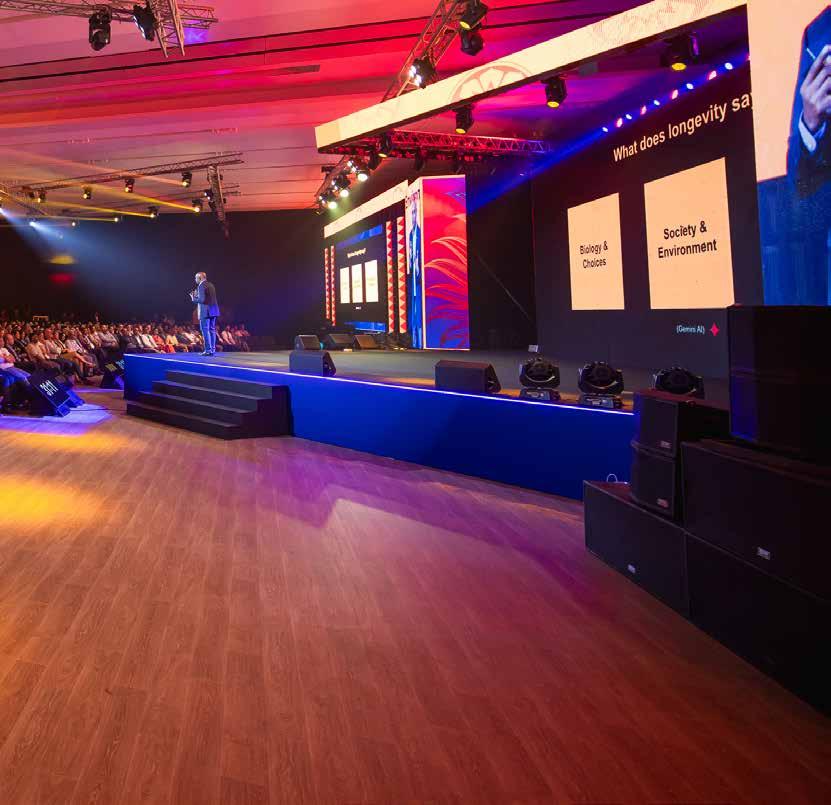
employable elsewhere — and still choose to stay. “If someone at WSO2 can’t get another job offer, then we’ve hired the wrong person. I want our people to be employable anywhere — even with better offers on the table — and still choose to stay. And if they do take a better offer, that can be the right move for them, and that’s okay. But if they’re not employable by others at all, then we have a real problem.”
As he closed, Weerawarana urged the audience to think of longevity not in terms of years, but in mindset. “Any company needs to learn to
stay young. It’s not about age — it’s about how you operate, how you think, how you act. It’s about being open to change and being adaptable. That’s what it means to stay young, and that’s the key to lasting.”
For a company that has just celebrated its 20th year, this was less a retrospective than a manifesto for the decades to come. WSO2 Con Asia 2025 was a reaffirmation of the company’s belief in adaptability, purpose, and culture as the foundations for enduring success. Or as Weerawarana concluded: “You
create a living, breathing being that is focused doing something meaningful that makes the world a bit better.”
WSO2Con Asia 2025 also featured presentations from key members of the leadership team, including Mifan Careem, Senior Vice President & Chief Solutions Officer; Asanka Abeysinghe, Chief Technology Officer; and Dr. Rania Khalaf, Chief AI Officer, alongside other WSO2 leaders who shared perspectives on technology, strategy, and the company’s vision for the future.




Mohamed Salama, Head of Fixed Networks, Nokia MEA, discusses AI and automation’s role in the evolution of fixed networks in the region
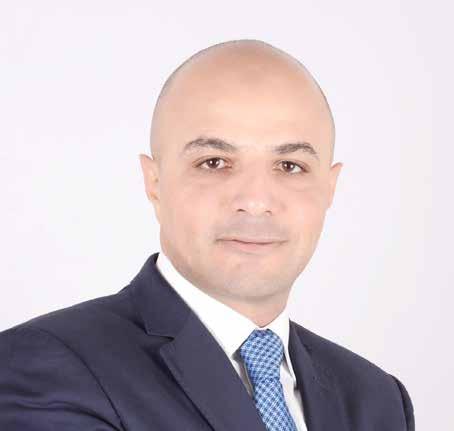
How is the fixed network landscape evolving in the MEA region?
We are witnessing a massive shift across the Middle East and Africa (MEA) from fragmented connectivity to high performance, high-impact fibre networks. What used to be about connecting homes is now about powering digital economies. Fibre is reaching everywhere: industrial zones, mobile base stations, healthcare facilities, and smart cities. Fixed broadband
penetration in the MEA region is expected to grow to 12.5 percent by 2029, from 8.5 percent in 2024. What is driving this is the need for inclusive growth. Digital inclusion is no longer a nice-to-have. It is a necessity. What used to be about getting people online is now about enabling education, healthcare, commerce, and innovation on a scale. This shift reflects a broader ambition across the region: to close the digital divide and unlock meaningful participation in the global digital economy.
A clear example of this transformation is happening in South Africa. Nokia partnered with Fibretime to deliver affordable broadband to underserved communities across cities like Cape Town, Johannesburg, Gqeberha, Mangaung and Stellenbosch. The goal is to connect 1.5 million homes using a pay-as-yougo model that starts at just 5 South African Rand a day. For many families, this will be their first reliable highspeed internet connection.
But it is not just about laying cables. It is about creating real opportunities for people. As fibre reaches farther into cities, towns, and rural areas, the community has a fair shot at joining the digital world, regardless of geography or income.
What are some of the most impactful use cases you’ve seen where AI has enhanced fixed network performance—whether in predictive maintenance, fault detection, or service optimisation? Artificial Intelligence (AI) is already making a real difference in how fixed networks are managed. It is helping operators stay ahead of problems instead of reacting to them. With predictive maintenance, AI scans telemetry data in real time and spots anything unusual before it becomes an issue. That kind of early detection turns troubleshooting into prevention, which means fewer outages and happier customers.
In the field, it is improving the way technicians work too. With Nokia Broadband Easy, a quick photo of a fibre installation can be analysed instantly by AI to check if everything is done right. It cuts down on errors, speeds up quality checks, and helps teams move faster.
AI is also changing the customer experience. In a project with e& UAE, we trialled fixed network slicing for gamers. The system recognised when a console came online and created a dedicated slice for it, ensuring low latency and high bandwidth.
These are part of a bigger move toward networks that can think, adapt, and run with less human intervention.
With bandwidth demand surging due to applications like streaming,

As operators roll out faster networks, such as 10G, 25G, and even 50G PON, AI will be the key to keeping complexity under control
gaming, and cloud services, how can operators use AI to better manage capacity and deliver consistent performance?
Fixed networks are under more pressure than ever. In the MEA region, fixed broadband usage is on the rise, and as more people stream in 4K, game online, or run meetings from their living rooms, the strain on capacity keeps climbing.
That’s where AI makes a real difference. Instead of treating all traffic the same, it sees what’s happening across the network
and shifts bandwidth in real time. If someone’s on a video call or in the middle of a multiplayer game, the network adjusts to keep things smooth, without anyone having to lift a finger.
In the home, AI is changing how Wi-Fi behaves. Our Corteca platform, for instance, learns which devices are doing what. A smart fridge doesn’t need much bandwidth, but a gaming console or a 4K TV certainly does. Corteca gets that, and it balances performance accordingly. The result? Less lag, fewer

complaints, and a better experience for everyone in the house.
As operators roll out faster networks, such as 10G, 25G, and even 50G PON, AI will be the key to keeping complexity under control. This kind of smart, responsive network isn’t a luxury anymore. It’s what customers expect. And the operators who get it right will be the ones who stay ahead.
Looking ahead, how do you see AI and automation shaping the future of fixed networks, and
what strategic role will Nokia play in driving that evolution across MEA?
The telecom world is finally catching up to the automation wave. Like other industries, we are moving from manual, hands-on operations to networks that can run themselves, thanks to AI. But there is a significant difference between automation and autonomy, and that difference matters.
Think about a dishwasher. Most models today are automated: you choose the settings, press start, and
12.5%
Projected fixed broadband penetration rate in MEA by 2029
Source:Research&Markets
off it goes. But it will wash the same way whether it is packed full or holding a single mug. Now imagine a dishwasher that knows what’s inside, senses how dirty everything is, and adjusts its wash on the fly. That is autonomy. And that is where fixed networks are heading: toward systems that do not just follow instructions but can make decisions in real time.
Operators in the Middle East and Africa are already moving in this direction. Some are chasing efficiency by cutting down on manual errors and streamlining how things get done. Others are focused on business results, like connecting more homes and keeping subscribers longer. And many just need to move faster by rolling out new services quickly and adapting on the fly.
This is where openness makes a real difference. At Nokia, we have built platforms like Altiplano and Corteca to support open ecosystems. Operators can add their own features or plug in thirdparty apps. Want to monitor usage, optimise home Wi-Fi for gaming, or introduce parental controls? It is all possible.
This is not just theory. Across more than 160 projects globally, we have seen operators boost efficiency by up to 40 percent, double revenue with new models, and launch services up to five times faster. Automation is not a futuristic goal anymore. It is already here, and it is changing the game.
Abdelilah Nejjari, Managing Director - Gulf & Levant, Cisco, unpacks the region’s AI momentum, the rise of AgenticOps, and what it means to build networks of the future

The conversations around artificial intelligence in the Gulf moved on from exploration to implementation. As governments pursue national strategies and enterprises work on specific use cases, it’s no longer a question of whether AI will be adopted but about how to build the systems that can carry it at scale.
Few developments capture this shift more decisively than Stargate UAE—a vast AI compute project under construction in Abu Dhabi. Led by G42 and supported by a
global alliance of technology firms including OpenAI, NVIDIA, Cisco, Oracle and SoftBank, the initiative will see a 1-gigawatt AI supercomputing campus take shape, with 200 megawatts of capacity targeted for deployment by 2026.
“If you look at the UAE’s ambitions around AI, they’re really significant. The country wants to be a global leader in AI. The announcements we’ve seen from the country’s leadership are genuinely commendable. Abu Dhabi, specifically, aims to establish the world’s first AI-powered government.
All of this is driven by a clear vision and strategy,” says Abdelilah Nejjari, Managing Director – Managing Director - Gulf & Levant, Cisco.
“The pace of innovation continues to be incredible,” he adds. “We’re seeing significant developments, especially around AI, and we are preparing customers to adopt and use AI effectively.”
For Cisco, the project signals the region’s readiness to execute on its AI ambitions—and an example of the infrastructure-led transformation the company now sees as central to its role. For Stargate UAE, Cisco is contributing secure networking, observability, and infrastructure across both hardware and software.
“We’re working closely with all of these major players and are very optimistic about the progress so far. We’re proud to be part of something this significant,” says Nejjari.
As part of Cisco’s initiatives, engineers are rethinking how AI infrastructure is managed. Traditional models—where human operators rely on dashboards and alerts—are proving too slow for environments that are increasingly AI-native and real-time. Even AIOps, once viewed as a major breakthrough, is showing its limits.
“Traditional AIOps typically monitor infrastructure and alert you to incidents or issues—sometimes even suggesting a fix,” Nejjari explains. “But they still rely on human intervention. AgenticOps is the next level. It’s fully autonomous, which means the AI agent understands the environment, reasons, makes decisions, and acts— without human input. Multiple agents can coordinate and validate actions at high speed.”
Cisco’s AgenticOps approach was unveiled at Cisco Live 2025, alongside AI Canvas—a unified environment where AI agents and
human engineers work together in real time to monitor, diagnose, and resolve issues across distributed environments. The system is powered by Cisco’s Deep Network Model, a domain-specific large language model trained on four decades of telemetry and enriched with over 3,000 reasoning traces from Cisco engineers.
That shift doesn’t eliminate the need for networking engineers, Nejjari emphasises. “As someone who started out as a network engineer, I understand the challenges they face. With AgenticOps, many of those pain points will be reduced— or even eliminated. This allows engineers to focus on higher-value tasks like network design and performance optimisation. The future is bright, and I’m proud that Cisco is leading the way.”
As enterprises accelerate AI adoption, the demands on infrastructure go beyond scale and speed “To support AI, you need low-latency, high-speed, and resilient networks—especially in this emerging Agentic AI era, where AI agents autonomously make decisions and communicate,” says Nejjari. “Networking also has to be energy-efficient. AI demands a lot of power, so optimising infrastructure helps support sustainability goals as well.”
That level of performance also requires a new approach to security—one that addresses both how AI is used and how it must be protected. Nejjari frames the challenge as a dual mandate: securing the infrastructure that powers AI and using AI to strengthen cyber defence.
“When we talk about ‘AI for security’ and ‘security for AI,’ we mean two things,” he says. “Security for AI means protecting the AI infrastructure itself: the data centres, GPUs, LLMs for training and inference. These systems introduce new risks—hallucinations, prompt injections, and more.”
“On the flip side, AI for security is necessary because attackers are now using AI. Traditional cybersecurity

human defenders. But AI-powered attacks are faster, more complex, and harder to detect. Human response alone isn’t enough.”
Cisco’s AI Defence platform is built to meet those requirements. It combines runtime protection, intelligent detection, and deep observability with embedded AI agents.
“Cisco’s AI Defence does both: protects AI infrastructure and uses AI in our security solutions,” Nejjari says. “Moreover, we have a unique advantage because we operate at the network layer. Everything passes through the network—so we can embed security deeply.”
Building on that network-layer advantage, Cisco has also developed HyperShield, a system that embeds security enforcement throughout the network fabric. “It’s like placing a firewall at every point in your network. A port on a switch becomes securityaware. AI can determine if a device is genuine or impersonated, and automatically block access if needed. That’s not possible with traditional tools—it has to be AI-driven.”
Human capital in the age of AI As infrastructure becomes smarter, organisations will need to upskill their teams. The AI shift isn’t simply about
new technologies—it’s about new skills. Cisco is investing heavily in regional talent development through its Networking Academy, which has trained over 121,000 learners in the UAE and more than a million across the Gulf.
“The World Economic Forum says 25 percent of jobs will change by 2027 due to AI,” Nejjari says. “Cisco is leading an AI consortium with eight major companies, and we’ve found that 92 percent of IT jobs will be moderately or highly impacted by AI. Most jobs won’t disappear, they will simply evolve. We need to prepare the workforce for that shift.”
To that end, Cisco Networking Academy’s curriculum now includes dedicated AI tracks delivered through more than 40 institutions in the UAE. “Some large government entities in Abu Dhabi have their own academies to train staff,” he says. “The new AI curriculum will empower young professionals and seasoned employees alike to upskill and embrace AI opportunities.”
For all the advances happening at the organisational and national levels, AI also presents deeply human questions—about trust, safety, and the kind of future we’re building. For Nejjari, the implications of AI go beyond business strategy; they carry personal weight as well.
“What concerns me most is the cybersecurity aspect,” he says. “We were already in a constant race with attackers. Now, with AI in their hands, their capabilities will be multiplied a thousandfold.”
He doesn’t sugarcoat the threat.
“Attackers only need to be right once. Defenders need to be right every time – AI tips that balance even more in their favour.”
But alongside the concern is genuine optimism. “What excites me most is thinking about my children and the world they’ll live in,” he adds.
“The ease and opportunities they’ll have with AI are incredible. Their world will be very different—and I believe, much better.”
“AI is already changing the world dramatically in a short time,” says Nejjari. “And we’re just getting started.”

ABy Sid Bhatia, Area VP & General Manager – META, Dataiku
I is in our offices, in our homes, and in our pockets. This is true in many countries around the world, but the United Arab Emirates (UAE) stands as a shining example of forethought on all things AI. Examples of the government’s vision include its National Programme for Artificial Intelligence and its status as the first country to establish an AI ministry. As more and more organisations find ways to integrate analytics and models into their operations, we will move deeper and deeper into an era of unprecedented enterprise intelligence.
In taking advantage of the new opportunities AI brings, organisations must balance the temptation of impactful quick wins with the need to deliver sustainable transformation. The former requires a short-term strategy that has one broad goal — to prove the valueadding power of AI. Teams should select high-impact use cases with solutions that can be launched easily within reasonable timeframes. A good guide in choosing these use cases is to explore what areas of the business are targeted for improvement and ask who the beneficiaries will be and how
success can be measured. Those proposing the use case must then articulate why AI is the ideal option for transformation and explain where the necessary data is stored. After this, the consequences of a failed or stalled project should be discussed before project leaders sketch out a timeline.
The right technology stack will be critical in allowing businesses to match tools and solutions with selected use cases. Intuitive interfaces and dashboards and thorough documentation for governance and auditing purposes are critical. Just as critical are
In taking advantage of the new opportunities AI brings, organisations must balance the temptation of impactful quick wins with the need to deliver sustainable transformation
the people assigned to make Universal AI a reality. These are the leaders that will change the mindsets of colleagues to match business ambitions and to grasp the opportunities in AI that the UAE economy will deliver. The organisation needs to identify ambassadors and champions who will inspire and guide interdepartmental collaboration on the creation of models and agents. Champions can be teams of analysts who are skilled in quantifying value returns and presenting them as inspiration for others. Or they can be power users who are good at articulating the benefits of AI. Also crucial are team and departmental leaders who can use their influence to initiate upskilling programmes. And IT managers will be at the centre of deployment, data access, and governance. With the right people in place and early successes having inspired decision makers, the enterprise can look to the longer term.
As the marginal returns of each successive quick win diminish, the business will scale its AI capabilities with a fundamental shift in company culture that reduces the incremental costs of AI use cases. It is in this phase of the AI journey that governance becomes indispensable as it focuses teams on risk-adjusted value delivery and on the efficiency of scaling, all while remaining compliant with government standards. UAE law on AI is varied and continues to evolve, so, as enterprises scale their AI efforts, it will be prudent to formalise a strategy that balances these developments with the business’s own view of responsible AI and the innovation requirements of MLOps. Governance as it relates to proofs-of-concept (POC), selfservice data, and industrialised data products must be clearly understood. Experimentation is to be encouraged but teams need to know when self-service projects
should move into the funding, testing, and deployment stages. Modern MLOps teams embed governance into the AI lifecycle, from data collection to operationalisation. They will be aware of roles and responsibilities across design, performance, and maintenance of ML models and will monitor updates and refreshes to manage model drift. They will have established performance and risk metrics to protect potential value, and they will be dedicated to the ongoing auditing of models to check for any deterioration in the quality of results. Over time, the MLOps team can only prevail if due attention is paid to the diverse training needs of not only the team itself but also non-technical colleagues. One-size-fits-all training is unlikely to guarantee sustainable success in AI, so time and resources must be applied to strategic upskilling. Any training plan must be based on skills gaps identified in people with specific job roles.
Not just possible... inevitable While everything starts with value demonstration, the organisation must emphasise governance as the underpinning element of long-term success in AI. Sound governance does not need to unduly impact speed and agility, but without it, the enterprise may only be accelerating towards failure. Today’s AI platforms can help team leaders navigate these waters. They are designed for the upskilling process — intuitive for the user but with guardrails to protect the organisation from risk. Equally however, they offer tools for experts who demand more flexibility. With all levels of expertise covered and governance included as standard, the organisation’s AI platform allows it to move beyond quick wins and take its place in the AI race. AI platforms allow creators and consumers to trace model outputs back to the logic that supplied them, which enhances trust, which lays the groundwork for future successes. And with trust, Universal AI becomes not only possible but inevitable.

FBy William O’Neill, Area VP and GM - GCC, ServiceNow
or as long as commerce has existed, merchants have tried to construct the personalised experience. Loyal customers are those who feel understood and respected, and the digital age has allowed sellers to gather transactional and personal data at scale, and use it to discern not only what customers want, but when they might want it and how they might want it to be delivered.
In the United Arab Emirates, wholesale and retail trade is among the largest non-oil sectors, coming in top in the second quarter of 2024 at 12.6 percent of GDP. Customer relationship management (CRM) has become a crucial element for makers, movers and sellers as they jostle to take a greater share of a growing industry. But like many other technological touchstones, CRM that does not leverage the power of AI is starting to look dated.
Legacy CRM systems tend to favour building sales and customer support forecast systems. They concentrate on using complex mathematical models to come up with revenue projections. Tools are stacked on top of other tools for this purpose, and the customer and their unique needs are forgotten. Many sales, support, and marketing teams still
use traditional CRM, which suffers from laborious and error-prone data-entry, suboptimal insights, and unpredictable ROI. Information silos lead to vital customer information being splintered, while the CRM solutions themselves can be difficult to implement, use, and maintain. In addition, they often do not integrate smoothly with other core systems.
Modern customer engagement is far more of a real-time matchup between brand and consumer. It requires the orchestration of hundreds of go-to-market (GTM) workflows within the customer journey, from piqued interest to after-sales courtesies. With the right workflow automation, businesses can respond to customer needs with the speed and consistency needed to deliver true personalisation. It is worth taking some time to discuss what we mean by “consistency”. Throughout their journeys, customers interact with many employees from many different departments — sales, marketing, customer service, finance, and so on. Where silos exist, customers must repeat their history to various contacts, leading to fragmented experiences, longer resolution times, higher costs, and reduced brand loyalty.
So, while legacy CRM was designed to support top-down

and linear models of customer behavior, we can see that customers have changed and so has our understanding of their journeys. This new realisation, coupled with the emergence of agentic AI, indicates that CRM is entering a post-SaaS era in which AI agents will quickly supplant the traditional solutions described. UAE businesses must prepare themselves for more autonomous, personalised CRM. Those that do not may be sidelined as customers flock to brands that gain a reputation for truly understanding the buyer’s journey.
Signs of this CRM shift can be seen in the market, which for many years has been dominated by just a few providers and too few options. In many ways, innovation

Today’s AI capabilities also mean that data entry is less tedious for human agents. But AI-native CRM goes further than data-entry automation
of the enterprise, we will see many discussions on how these reinvented systems can bring opportunities for automation, business intelligence, and customer delight.
What the modern seller will aim for is not automation for automation’s sake. The goal is smart orchestration; rather than being just an activity logger and a pipeline manager, AInative CRM will anticipate customer needs and guide human agents to more satisfying actions. Modern CRM is a unified revenue platform that covers the entire customer journey, continually adding context so that no opportunities are missed.
Today’s AI capabilities also mean that data entry is less tedious for human agents. But AI-native CRM goes further than data-entry automation. It learns from data in real time by automatically retrieving historical data for context and responds in the moment. This allows systems to automatically triage helpdesk tickets, optimise workflows, and flag any opportunity for upselling and crossselling. Human agents are thus freed from traditional administrative tasks to focus on more innovative customer interactions, meaning they can add more value. Agentic AI adds value at every touchpoint in the entire sales pipeline and customer journey.
to carry the CRM function into the AI era has been lacking, but there are indications that this is about to change. As new players emerge to capitalise on advancements in AI, competition will heat up and we
can expect rapid progress. As the industry is pushed to improve, its business customers will ultimately reap the rewards of progress — customer and employee experiences, efficiencies, productivity, conversion rates, ROI, and bottom lines will all be boosted by CRM innovation. The enterprises served by AIpowered CRM will disrupt their own industries, making them more agile, and customer-centric. The cycle will repeat, and the entire economy will benefit.
Already, throughout the region, boardrooms and management meetings are abuzz with talk of AI and its potential benefits. Currently, reinventing CRM through AI is not on many of these agendas. But once decision-makers are made aware of how data, workflows, and AI can come together for the betterment
ServiceNow’s Enterprise AI Maturity Index research identifies AI Pacesetters. Among other things, they are more likely to have deployed agentic AI, and we discovered that Pacesetters are already seeing measurable ROI as a result. Pacesetters are also characterised by a willingness to rip up old rule books. They will establish a new culture where AI is a trusted, indispensable part of business operations. The same is likely to happen with CRM as it transitions from a sales tool to an integral part of corporate DNA. It is time to tell a new CRM story. It is time to say a respectful farewell to layered solutions and introduce end-to-end, AI-native CRM to the stage. And with it, we just might see corporate cohesion, employee inspiration, customer satisfaction, and profitability all soar.
Petra Schirren, President of Ericsson Gulf at Ericsson Europe, Middle East and Africa, shares how the company is turning strategic ambition into real-world results across a rapidly evolving digital landscape

Across the Gulf, the race to become a global leader in digital infrastructure is accelerating. With bold national visions, strategic regulatory frameworks, and a tech-savvy population, countries in the region are advancing ambitious agendas around 5G, AI, and next-generation connectivity.
Ericsson has been a key enabler of this transformation—not just as a telecom provider, but as a broader technology partner—collaborating across sectors to shape digital infrastructure, drive innovation, and support the region’s shift
toward more connected, intelligent, and sustainable ecosystems.
Leading that effort is Petra Schirren, President of Ericsson Gulf at Ericsson Europe, Middle East and Africa, who brings both global experience and a strong regional focus to the company’s evolving role. Since her appointment in April 2025, Schirren has brought a clear strategic vision and a sharp focus on advancing Ericsson’s mission in the region. Just three months into the role, she speaks with the conviction of someone deeply immersed in the Gulf’s fast-evolving
digital ecosystem. From setting strategic direction to strengthening partnerships with operators, her first 100 days have been marked by clarity of purpose and a strong emphasis on execution.
“I’ve spent my first months getting to know my team, meeting customers, understanding our challenges and opportunities,” she says. “That’s been the foundation for setting our strategy.” It’s a grounded approach, shaped by global perspective but deeply attuned to the region’s unique strengths— particularly the alignment across public and private sectors. “What stands out here is the alignment,” she adds. “Governments, industry bodies, and enterprises all seem to move in sync. That kind of cohesiveness makes execution easier and more impactful. I haven’t necessarily seen that in other parts of the world.”
That cohesiveness is already producing measurable results.
According to Ericsson’s latest Mobility Report, 5G adoption in the Gulf is projected to reach 90% by 2030— positioning the region well ahead of most global markets. Schirren attributes this not only to investment but to intent. “In this part of the world, there’s a real drive to be the best,” she notes. “That ambition, coupled with strong regulatory frameworks and significant investment from operators, has created a powerful growth environment.”
One of the defining factors of the region’s 5G trajectory is the early move toward standalone 5G architecture. “Standalone 5G is where the network’s full capabilities come to life—network slicing, differentiated connectivity, enterprise-grade use cases. Some Gulf countries are already there, and others are about to launch. It opens the door to far more innovation.”
But the transformation underway in the Gulf isn’t just about speed or coverage—it’s about evolution. Operators across the region are actively reimagining themselves as “tech-cos”—technologydriven enterprises that go beyond connectivity to deliver platforms, services, and applications across industries.
“Traditionally, telcos were seen as bit-pipe providers—selling data packages. But with 5G, they can do much more,” says Schirren. “Whether it’s fintech, security, public safety, or industrial automation, the network is capable of supporting a wide range of applications. Operators are now in a position to deliver that value directly to enterprises and consumers.”
Ericsson’s role, she emphasises, is not simply to build the networks, but to help partners unlock their full potential. “We don’t work directly with consumers. Our job is to empower our partners,” she explains. “We embed AI into our products, our services, and our operations—to make networks smarter, more efficient, and more sustainable. We’re also exposing APIs that allow developers and enterprises to tap into capabilities like latency, security, or quality of service. The idea is to create a platform—like the one we’re building with Aduna— where operators, hyperscalers, and developers can co-create and grow the ecosystem together.”

environmental responsibility extends throughout the network lifecycle.
We embed AI into our products, our services, and our operations—to make networks smarter, more efficient, and more sustainable
One standout example of this partner-first approach is Ericsson’s collaboration with e&, a long-standing Gulf operator actively transitioning into a techco. “This has been about sitting down together, looking at a threeyear evolution roadmap, aligning on investment, monetisation, and future capabilities,” says Schirren. “It’s been very open—from CapEx and OpEx planning to shared strategy. They’ve been one of the most successful operators globally in this transition, and we’re proud to be a partner on that journey.”
Another core pillar of Ericsson’s vision is sustainability. It has long been embedded in the company’s values, and Ericsson continues to back that commitment with measurable action. “It’s not just branding for us—it’s embedded in how we operate and
how we measure performance,” Schirren says. Ericsson has pledged to reduce emissions across its entire value chain by 50% by 2030 and to achieve net-zero emissions by 2040. “That includes everything—from how we travel and build, to who we partner with, and how we handle end-of-life equipment,” she adds. The company is also collaborating with operators across the Gulf on connected recycling initiatives, ensuring
AI is just as central to Ericsson’s strategy, woven into every layer of the organisation—from product development and network operations to customer service and internal optimisation. “AI runs through everything we do—from R&D to troubleshooting to optimising network performance,” says Schirren. “We’re also using it in our own business operations, not just because it improves efficiency, but because we believe in selling what we use ourselves.”
With the orientation phase behind her, Schirren’s focus for the next 100 days is firmly on execution. “Strategy is only as good as your execution,” she says. “Now it’s about measuring up to what we’ve set out to do—whether that’s launching new applications, unlocking efficiencies, or building a bigger ecosystem. 5G is just the starting point.” It’s a decisive shift from planning to delivery, as she looks to turn strategic intent into measurable outcomes across the region.
And in a region moving at digital speed, she’s ready to match pace. “We want to make the most of this moment—because if we get it right, everyone wins.”
Rania Khalaf , Chief AI Officer at WSO2, discusses why the future of AI lies not in speed or scale alone, but in thoughtful innovation that delivers enduring value

As AI cements its place in the enterprise technology stack, WSO2 is approaching its integration with refreshing clarity—less about hype, more about real-world value. At the forefront of this effort is Rania Khalaf, Chief AI Officer at WSO2, who is leading initiatives to embed AI into the company’s platforms and empower developers to build intelligent applications at scale.
“I oversee AI across the company,” Khalaf says. “My main focus is twofold: embedding AI into our products to make them more effective and productive for
our customers, and extending those products so our customers can build their own AI-powered solutions and applications.”
That dual mandate—infusing AI within the platform and enabling others to do the same—is a reflection of WSO2’s broader vision: AI as a foundational layer of enterprise computing, not a bolt-on.
“We don’t treat AI as a shiny new object,” Khalaf explains. “We see it as part of the enterprise computing fabric... AI models become just another component to integrate.
Agents and tools become building blocks in application design. It’s about embedding that intelligence layer into existing workflows.”
This is not a theoretical exercise. WSO2 is actively advancing AI within its product architecture, including support for agent-based development and enhanced integration of foundation models. The focus is not just on capabilities but on making them accessible—whether to developers or business users working alongside them.
A major area of investment is in evolving the developer experience. With code now being partially or fully generated by AI, and natural language interfaces becoming more viable, traditional workflows are being reshaped.
“We’re exploring using natural language in Ballerina,” she says, referring to WSO2’s cloud-native programming language. “We’re seeing platforms open up to business users—allowing product managers to co-develop alongside engineers. That speeds up iteration and helps align closer to business needs early in the cycle.”
But Khalaf is quick to temper the excitement with realism. “There’s this illusion that AI gets you most of the way there, when in reality, a lot of steps are still required. A prototype generated by AI may run, but making it production-ready—secure, scalable, compliant—is still a big lift.”
In fact, she points to the growing need for a mindset shift around development cycles. “When Agile and CI/CD came along, it was a great idea, but it took nearly a decade before it became common in software development,” she says. “We don’t have that kind of time now—everyone wants things yesterday.”
That urgency is driving organisations to rethink everything—

from skill sets to tech stacks. Yet amidst the whirlwind of automation and generative models, Khalaf underscores the continued importance of human judgement.
“These models are probabilistic— they reflect patterns in the data they’ve been trained on,” she explains. “For a long time, they weren’t even trained to say ‘I don’t know.’ So when they lacked information, they just made something up.”
It’s a reminder that no matter how sophisticated AI becomes, the human element remains essential— especially in mission-critical applications. “There was a case recently where someone used an AI coding assistant, and it deleted the company’s production database— even though the prompt said not to make any changes without approval,”
she recalls. “We’re still learning where and how to apply AI safely.”
The stakes of failure vary greatly depending on the domain. “If a vision model misidentifies someone in a photo on social media, no big deal. But if that model is used for targeting in military systems, that 0.01 percent error rate is unacceptable.”
And this is where leadership becomes pivotal—not just to implement AI, but to govern it effectively. WSO2’s approach recognises that AI adoption isn’t just a technology shift; it’s an organisational one. It demands cultural alignment, cross-functional coordination, and executive-level sponsorship.
“AI needs to be championed at the CEO level,” says Khalaf. “Successful deployment requires coordination across all business units. AI on its own doesn’t drive change—it has to be embedded in processes across the company.”
To her, the democratisation of compute holds tremendous promise— not only for productivity, but for global equity and innovation. “That’s really exciting to me: the innovation that can emerge from that, and the potential for levelling the playing field globally.”
At the same time, she raises deeper concerns about fairness, representation, and power dynamics in the age of large models. “One concern I have is around data control—how much is concentrated in the hands of a few. These large models rely on massive amounts of data, and that creates potential for imbalance.”
Khalaf is also acutely aware of the cultural limitations of today’s AI systems. “Although many of these models are multilingual and support translation, they are still primarily trained on internet data—which is mostly in English. Localisation isn’t just about translating language—it’s also about representing culture.”
She adds, “In the Middle East, for instance, values and traditions are quite different from those in the West. When we talk about ‘guardrails’ for AI—what’s appropriate, what’s acceptable—we’re really talking about values. And the world doesn’t run on a single value system.”
As generative tools become the new interface to knowledge—replacing search engines with direct answers— the implications of model design and data control are vast. “Whoever controls the models controls the data that surfaces—and by extension, the values embedded in it. That’s a serious concern.”
Still, Khalaf believes this moment in computing is transformative—and filled with opportunity, not just risk. “It may be uncomfortable, but it’s also exciting, and I hope it leads to something better,” she says.
AI on its own doesn’t drive change—it has to be embedded in processes across the company
Despite the challenges, Khalaf remains optimistic about what lies ahead. “What excites me is the rate and pace of advancement, and how AI has opened up computing to the world. It’s no longer in the hands of a few PhDs or specialists. Now, people without technical backgrounds— sometimes even better than engineers—are using these systems effectively.”
At a time when the world is racing to keep up with the pace of AI, WSO2 offers a blueprint rooted in integration, developer empowerment, and responsible innovation. Khalaf’s outlook is a reminder that this moment isn’t only about technology; it’s about people. It’s about giving more individuals the tools to create, the freedom to experiment, and the confidence to lead in their own way.

By Ray Kafity, VP – META, Halcyon
In 2025, ransomware threats have evolved far beyond cloud and endpoint security. Today, attackers increasingly target firmware, BIOS, and processor microcode—the invisible yet essential layers of modern IT infrastructure. For security leaders across the Middle East, this expanded threat landscape demands a re-evaluation of traditional risk management strategies, highlighting significant gaps in visibility and defence. Innovation in the ransomware space hasn’t slowed; it has shifted. From cloud to firmware, threat actors are targeting deeper layers of infrastructure. The most recent evidence of this evolving threat is a proof-of-concept demonstrating ransomware being deployed directly onto a CPU.
A researcher has successfully deployed ransomware directly onto a computer’s central processing unit (CPU). Recent research showcased a proof-of-concept to demonstrate the feasibility of such an attack. Traditional ransomware attacks target software layers, but Beek’s
approach involves altering the CPU’s microcode—the low-level instructions governing processor operations. By modifying microcode, the ransomware can bypass conventional security measures, including antivirus programmes and operating system defences. This makes detection and removal exceedingly difficult. Infected systems might even require complete CPU replacement if the microcode cannot be cleared. Beek’s inspiration stemmed from a known vulnerability in AMD’s Zen processors, which, if exploited, allows unauthorised microcode loading. While Beek has no intention of releasing the ransomware publicly, his work underscores the potential risks posed by such vulnerabilities.
Experts warn that while this threat is currently theoretical, it highlights the need for heightened vigilance in hardware security. Malicious actors could eventually adopt similar methods. The possibility of ransomware operating below the OS layer presents a new frontier, one that today’s enterprise defences are rarely equipped to handle.
Hardware now in the crosshairs
No one should be shocked that ransomware would find its way onto CPUs. At Halcyon, we recently documented a ransomware attack leveraging native AWS tooling to encrypt exposed S3 buckets, highlighting how quickly theory becomes reality. So, if ransomware in the cloud surprised you, then ransomware baked into processor microcode shouldn’t.
This is to be expected when a multi-billion-dollar criminal industry is allowed to operate with near impunity. These threat actors aren’t amateurs; they’re organised, wellfunded, and reinvesting their profits into R&D. They’ve got developers and analysts who could hold their own in any Fortune 500 security org. The same kind of talent behind this CPU ransomware proof-ofconcept is already being paid handsomely by ransomware crews to push the envelope on new TTPs.
Ransomware is still, fundamentally, a low-tech, low-risk, high-reward game. You don’t need to exploit some exotic bug when sloppy configs or stolen creds will do. But when you can innovate, the returns are even greater. And right now, the ROI on ransomware is too good to ignore.
Across the Middle East, some organisations still rely on OS, or perimeter-level defences, leaving hardware-level innovations like this well outside their visibility. As threat actors professionalise, this detection gap becomes a liability.
Ransomware crews are hiring elite technical talent, developers and analysts. A 2025 CPX cybersecurity industry report highlights significant skills gaps in firmware forensics and microcode-level defence across Gulf organisations. Similarly, Gartner projects that information security spending in the Middle East and North Africa (MENA) will reach $3.3 billion by 2025, reflecting a 14 percent annual increase driven by digital transformation and expanding threats. That disparity, between attacker innovation and defender preparedness, will only grow.


Ransomware is still, fundamentally, a low-tech, lowrisk, high-reward game
In the UAE, ransomware attacks surged 32 percent year-on-year in 2024, underscoring just how quickly new tactics move from theory to threat. Meanwhile, in Saudi Arabia, the ECC update issued in early 2025 signals growing awareness of hardware-level risk, though technical enforcement remains an evolving area.
There won’t be a slowdown until either; attacks are made unprofitable, or the risk of getting caught outweighs the reward. Visibility must extend beyond software and cloud infrastructure into the hardware that underpins them. A proof of concept today will quickly become tomorrow’s headline attack pathway. For organisations across the Middle East, the window to build visibility
into firmware and hardware-level vulnerabilities is narrowing fast. Despite recent updates to cybersecurity frameworks across the MENA region—including Saudi Arabia’s Essential Cybersecurity Controls (ECC) and the UAE’s national cybersecurity standards— enforcement around firmware and processor-layer threats remains limited. Unless frameworks, talent pipelines, and detection capabilities evolve quickly, CPU-level ransomware threats could soon transition from theoretical risks into real-world breaches. Boards and CISOs across the Middle East must now assume these processor-layer exploits aren’t just possible; they’re increasingly inevitable.
With the Middle East scaling digital transformation, Gerard Allison, SVP - EMEA Sales, Sophos, highlights the company’s push for local cloud, partner enablement, and AI-powered defence
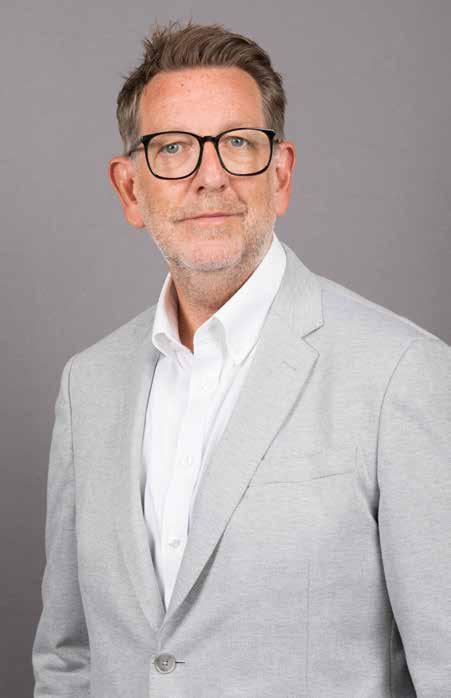
As the race to localise cloud infrastructure intensifies across the Middle East, the UAE and Saudi Arabia have emerged as clear leaders. The two countries now host 56 and 43 data centres respectively, according to Data Center Map, and both are proactively building sovereign cloud infrastructure capable of powering AI workloads and meeting tightening data localisation mandates. For global cybersecurity firm Sophos, this backdrop presents not just an opportunity—but a strategic imperative.
To strengthen its position in the region, Sophos has announced plans to launch a new data centre in the UAE, hosted on AWS, by the end of the year. The move is a response to mounting demand from public and private sector organisations for compliant, low-latency cybersecurity solutions hosted within national borders.
“The most important reason for doing that is because we’ve listened to customers and partners,” says Gerard Allison, Senior Vice President for Europe, Middle East, and Africa at Sophos. “They’ve always made the point that data sovereignty is becoming more and more important for UAE across local compliance, particularly in the public sector area. So data sovereignty is actually the key to the future.”
Governments in the UAE, Saudi Arabia, and beyond are tightening regulations around data sovereignty, particularly for sensitive categories like personal, financial, and health data. This has triggered a surge in demand for in-region cloud and security services. Sophos’ upcoming UAE facility is designed to meet these evolving needs, while enabling faster delivery of its cloud-native platform.
“We are a cloud-native and security solution, so we have our central platform which manages all our products,” Allison explains. “So we’ll be hosting that on AWS... It’s going to give reduced
latency and openness, a faster response to the cloud, which will allow them to add more cloud services into their organisation, while holding the data in the region.”
The deployment is also in line with regional digital transformation and AI ambitions. Saudi Arabia has set a goal for AI to contribute 12.4 percent of GDP by 2030, while the UAE expects AI to generate a 14 percent economic uplift by the same year. These strategies require immense, locally hosted computing power— and Sophos aims to be part of that backbone.
“I’ve been coming to this region for over 25 years now,” says Allison. “Sophos has always invested in the region and seen the potential. And I think there’s another phase of potential that’s happening that we really want to make sure we continue to invest in as well.”
The decision to partner with AWS reflects Sophos’ global infrastructure strategy. “All our data centres all over [the world] are within AWS,” he says. “So it’s just a global relationship we have... When we look to expand, we always expand via AWS as a company.”
But while the infrastructure is foundational, Sophos’ regional success has long been built on its channel-first model. “Our partners are the most critical to Sophos and to our customers as well,” says Allison. “We are a partner-first organisation— always have been. One hundred percent of our business goes through partners to end customers.”

Sophos supports a broad range of channel partners, including system integrators, MSPs, OEMs, and value-added resellers. Its MSP Elevate programme, launched earlier this year, is designed to deepen engagement with MSPs, offering bundled MDR services, simplified sales processes, rebates tied to performance, and access to more advanced security solutions.
“We’ve also launched our MSP Elevate Program, which gives [MSP] partners... more exposure to multiple areas of benefits, whether that be an MDR bundle... to make it even easier for them to add customers,” Allison explains.
What sets Sophos apart, he adds, is its vendor-agnostic approach. “We are a vendor-agnostic company, so we have over 350 integrations across multiple platforms— companies that compete with us as well. We make sure that the investments that partners have made have longevity.”
In markets like the UAE and Saudi Arabia, many MSPs now serve as outsourced CISOs for their clients, handling not just day-to-day protection but also compliance and governance. “We want to make sure that every customer of every size has the right security posture and is able to manage and secure themselves,” says Allison. “We really tailor the solution to the right size of organisation.”
AI also plays a central role in this vision. “AI has been a part of our platform since 2016,” he says. “We have an adaptive AI-native platform that runs across the whole protection of our customer base. But clearly, it’s not just about having AI—it’s about bringing it together with human expertise. AI doesn’t solve it by itself.”
We want to make sure that every customer of every size has the right security posture and is able to manage and secure themselvest
This flexibility has proven especially valuable amid a global shortage of cybersecurity talent. “When I think about the region, without doubt, there’s a skill shortage across the whole of cybersecurity—in fact, there’s a shortage worldwide,” he says. “So no matter what company you’re selling to, we need to understand the value that you can give them.”
By combining AI telemetry from more than 600,000 global customers with expert threat response, Sophos offers proactive defence across customer segments—from SMBs to enterprise. With the new UAE data centre, that power will soon be even closer to home.
“From a region perspective: expansion,” Allison concludes. “We’re expanding people into the region... Channel partners can expect us to continue to enhance programmes to complement the way they go to market... and stand shoulder to shoulder to go and beat the bad actors that are out there.”

By Mounir Hijazi, CEO – GCC, TP

Across the world, artificial intelligence is reshaping industries, governments, and economies. Yet few nations have grasped its potential, and its responsibility, as comprehensively as the United Arab Emirates.
Here, AI is not replacing humanity, it is amplifying it. And in doing so, the UAE is redefining what it means to lead in the global service economy, not by technology alone, but through the unique partnership between human ingenuity and machine intelligence.
The UAE’s AI Strategy 2031 has taken a strong, proactive approach on AI and champions investment in people as much as in industry. It is a call to action: to build a future where artificial intelligence drives economic growth, societal well-being, and international competitiveness.
The UAE is not only the first nation to appoint a Minister of State for AI, it is has also made AI a mandatory subject
in all schools from kindergarten to Grade 12, starting 2025. And it doesn’t stop there, universities, such as Middlesex University Dubai, have already started adding AI modules to their degree programmes.
Initiatives unveiled during Dubai’s AI Week, earlier this year, integrate generative AI into city infrastructure and citizen services, while Abu Dhabi’s ambition to become the world’s first AI-native government is signalling to the world that the UAE doesn’t just talk about change, it drives it.
Yet what distinguishes the UAE most is not only the sophistication of its technology, but the clarity of its purpose. AI is not seen as a substitute for human value – it is seen as a force multiplier that will work in tandem to accelerate national progress and build a more resilient future.
Across the region, businesses are already seeing how this humancentred approach can accelerate real
outcomes. AI-driven customer service management is allowing companies to streamline their business, increase upselling, and reduce agent handling time. We’ve seen companies increase sales conversations by nearly eight percent and reduce agent handling time by up to 30 percent. These aren’t abstract possibilities, they are measurable gains that show how AI’s precision can work together with human intelligence. This allows human advisors to focus on more complex, meaningful customer interactions and opens businesses to new opportunities to invest in client solutions and scale their operations.
Ultimately, true economic acceleration does not come from data centres alone. It comes when frontline professionals, such as customer advisors, citizen service representatives, and specialists, are supported with AI-driven insights, virtual co-pilots, and predictive technologies, guided by organisations experienced in large-scale workforce transformation and human-AI integration.
In a nation where more than 300 languages are spoken and cultures intermingle seamlessly, emotional intelligence is not an optional skill, it is a competitive advantage. By augmenting emotional intelligence with the precision and scalability of AI, we will be able to craft a new breed of workforce, one that delivers globally competitive experiences without losing the human touch.
And this is only the beginning – the UAE’s ambition is not solely inwardfacing. As it refines its AI-enabled services, the UAE is positioning itself as an exporter of excellence. Solutions piloted here across banking, healthcare, public services, education, oil & gas, and other industries, are increasingly reaching global markets, powered by service hubs rooted in the UAE.
Our collective task is clear: to ensure that artificial intelligence serves to elevate human potential, not diminish it. To co-create services that are not just faster or smarter, but more empathetic, resilient, and future-ready. The partnership between humans and AI, between ambition and ethics, between speed and empathy, this is the next chapter of global service leadership. And it is being written right here in the UAE.


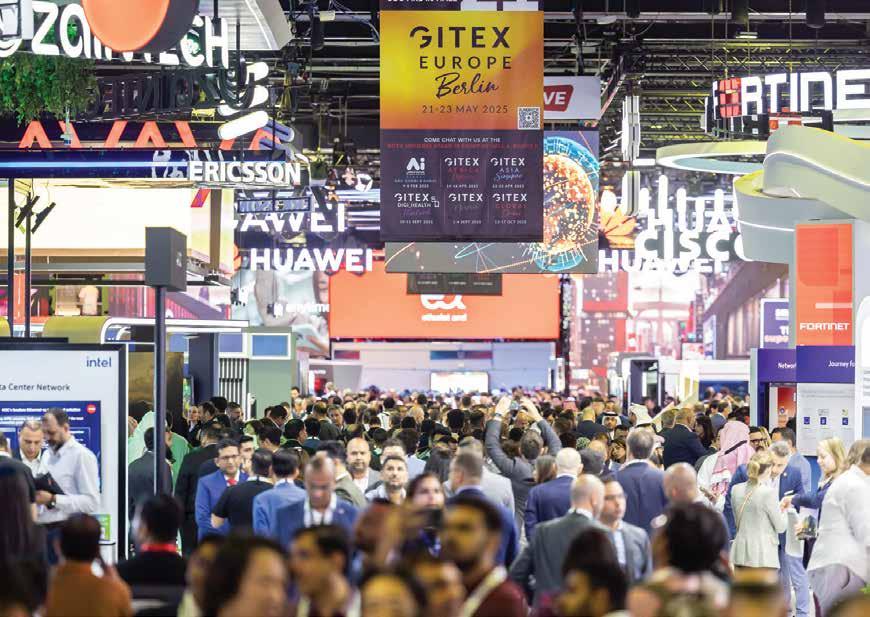



Sunil Paul, MD of Finesse, shares his perspective on the value of embedding security across the AI lifecycle — from development to deployment — to ensure trust and resilience
Artificial intelligence is no longer confined to innovation labs. From customer service chatbots powered by large language models (LLMs) to predictive analytics shaping supply chains, AI has become a foundational technology for enterprise competitiveness. Yet, alongside the promise lies an uncomfortable truth – AI systems are uniquely vulnerable, and securing them requires a different mindset than traditional IT.
The risks emerge early. Consider training data—the very lifeblood of AI. If datasets are incomplete, biased, or tampered with, the resulting models inherit those flaws. Worse, poisoned data can deliberately sabotage performance. This is why enterprises must treat data provenance and
governance as strategic priorities. Embedding security from the outset reduces downstream risks and signals to regulators and customers that trust is non-negotiable.
As development scales, the attack surface widens. Supply chains for AI models and pipelines now include
countless dependencies—opensource libraries, cloud environments, and MLOps workflows. Here, automation becomes essential. Tools that continuously scan for vulnerabilities, flag insecure code, and integrate with existing DevOps practices can catch risks before they metastasise. In other words, security must shift left into the development cycle.
Deployment, however, is where the pressure really mounts. LLMs and ML systems are exposed through APIs and interfaces, creating opportunities for prompt injection, model extraction, or IP theft. Safeguards such as access controls, anomaly detection, and “AI firewalls” are no longer optional. They provide the runtime vigilance enterprises need to ensure models aren’t exploited in the wild. Working with organisations like Bosch AIShield, which focus specifically on securing AI and ML systems across their lifecycle, adds another layer of assurance—helping enterprises uncover hidden vulnerabilities and defend against sophisticated adversarial threats. The value here is clear: innovation can scale safely when security is built into every layer of the AI pipeline.
Of course, technical defences must be matched by governance. Regulations are moving quickly— from the EU AI Act to regional frameworks in the Middle East— and enterprises will soon need to demonstrate compliance as rigorously as they do for data protection. Automated red-teaming, audit-ready reporting, and alignment with standards like NIST’s AI Risk Management Framework will be vital in translating security into regulatory resilience.
Trustworthy AI is fast becoming a competitive advantage, and those who treat security as part of their innovation strategy will lead in both adoption and impact
Looking at the bigger picture, we must recognise that securing AI, much like any technology, is not a one-time project but a continuous process. Enterprises that adopt an end-to-end strategy—covering development, deployment, and governance—will not only reduce risk but also differentiate themselves in the market. Trustworthy AI is fast becoming a competitive advantage, and those who treat security as part of their innovation strategy will lead in both adoption and impact.



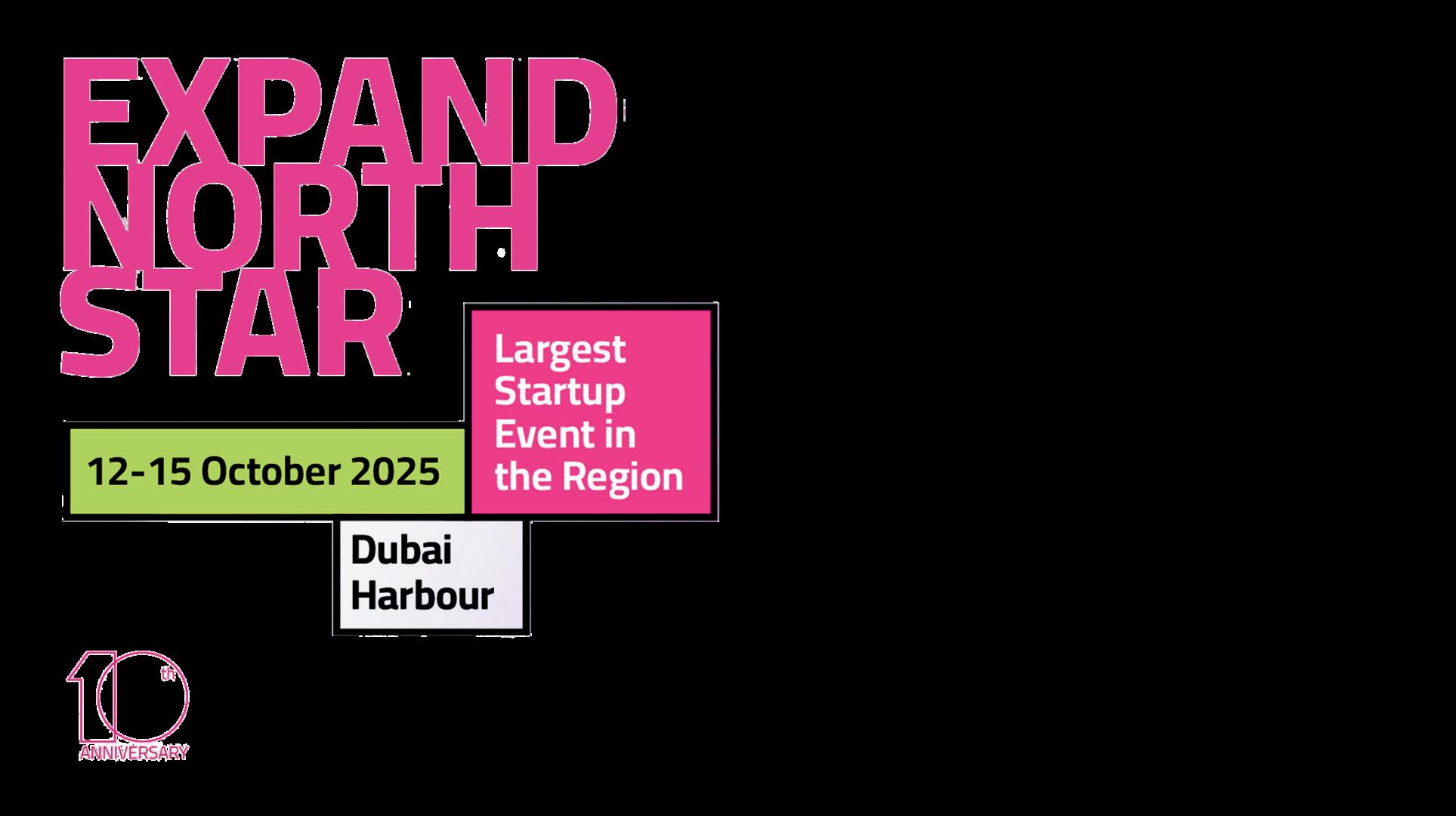





Canon has introduced two ultracompact 3-in-1 PIXMA printers – the TS6540i, featuring an OLED screen, and the TS4140i – designed for speed, convenience, and seamless smartphone connectivity. Measuring just 374 mm wide, they fit easily into small workspaces while offering a sleek, modern look.
Equipped with longer print heads and an enhanced print engine, these printers deliver print speeds of up to 14.0 ipm in monochrome and 9.0 ipm in colour, with a First Print Out Time of approximately 7.5 seconds for monochrome and 9.5 seconds for colour. The new pigment black ink ensures razor-sharp text, while optimised droplet placement enhances
clarity. A dedicated barcode mode supports high-quality barcode and QR code printing for business use. For creatives, the printers offer vivid, borderless photo printing from 5x5 inch to A4, producing a glossy 4x6 inch print in around 39 seconds. They support wireless printing and scanning via the Canon PRINT app, Apple AirPrint, Mopria for Android, and cloud services. The TS6540i adds QR code direct connect and a bright 1.42-inch OLED screen, along with a 1-Touch Copy function for quick copying. Both models feature a front-facing layout, 100-sheet cassette, and Auto Duplex printing, combining speed, quality, and convenience for everyday use.


Valerion has entered the UAE and Saudi Arabia markets with the launch of its VisionMaster Pro 2 and StreamMaster Plus 2 triple-laser 4K RGB projectors, marking its debut in the region’s home entertainment sector.
The VisionMaster Pro 2, part of Valerion’s premium lineup, delivers 4K UHD resolution with up to 3,000 ISO lumens of brightness, projecting vivid images up to 300 inches. It features an optical zoom for precise placement without pixel distortion, making it suitable for both spacious majlis settings and compact apartments.
The StreamMaster Plus 2 is designed for convenience, running on Google TV OS with instant access to platforms such as Netflix, YouTube, and Shahid. With built-in Wi-Fi, Bluetooth, speakers, and voice control via Alexa or Google Assistant, it eliminates the need for additional devices.
Both models cater to gamers with refresh rates up to 240Hz, input lag as low as 4ms, and dedicated gaming modes including RPG, SPG, FPS, RCG, and FPS Crosshair.
Huawei’s Pura 80 Ultra brings a true leap forward in smartphone innovation, particularly in photography. Breaking the norm where telephoto cameras were secondary, it debuts a Switchable Dual Telephoto Camera with 3.7x and 9.4x focal lengths on a shared large sensor, delivering cinematic portraits, sharp close-ups, and vivid low-light shots. From city skylines to concert stages, it captures rich detail and vibrant colours even in challenging lighting.
The main camera features a 1-inch Ultra Lighting HDR sensor with the industry’s highest 16EV dynamic range, surpassing many professional cinema cameras. Combined with the Ultra Chroma Camera, it produces
ultra-clear, balanced images with exceptional colour accuracy, especially in night scenes.
Design-wise, the Pura 80 Ultra showcases the Dazzling Forward Symbol, inspired by luxury jewellery, with a golden ring around the lens and the XMAGE emblem. Running EMUI 15, it offers AI-driven privacy, two-way noise reduction for calls, and a Smart Controls Button that doubles as a fingerprint reader and shortcut key. It packs a 5170mAh battery with 100W SuperCharge and 80W wireless charging, alongside an Ultra-clear HUAWEI X-True Display with 3000nit peak brightness, adaptive refresh rate, and smooth, vivid visuals, making it a standout flagship for 2025.



Managing modern networks is time-intensive and costly, and while cloud computing and converged infrastructures deliver a great deal of business value, they also add complexity. Allied Telesis has solved these issues with full visibility, easy security, and automated administration of wired and wireless devices across all your business locations.